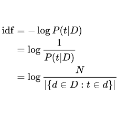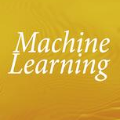In this paper, we present a novel method to compute decision rules to build a more accurate interpretable machine learning model, denoted as ExMo. The ExMo interpretable machine learning model consists of a list of IF...THEN... statements with a decision rule in the condition. This way, ExMo naturally provides an explanation for a prediction using the decision rule that was triggered. ExMo uses a new approach to extract decision rules from the training data using term frequency-inverse document frequency (TF-IDF) features. With TF-IDF, decision rules with feature values that are more relevant to each class are extracted. Hence, the decision rules obtained by ExMo can distinguish the positive and negative classes better than the decision rules used in the existing Bayesian Rule List (BRL) algorithm, obtained using the frequent pattern mining approach. The paper also shows that ExMo learns a qualitatively better model than BRL. Furthermore, ExMo demonstrates that the textual explanation can be provided in a human-friendly way so that the explanation can be easily understood by non-expert users. We validate ExMo on several datasets with different sizes to evaluate its efficacy. Experimental validation on a real-world fraud detection application shows that ExMo is 20% more accurate than BRL and that it achieves accuracy similar to those of deep learning models.
翻译:在本文中,我们提出了一个用于计算决策规则的新方法,以构建一个更准确、可解释的机器学习模型。ExMo 可解释的机器学习模型由一份IF...thetheN...说明列表组成,在条件中有一个决定规则。这样,ExMo自然为使用触发的决定规则进行预测提供了解释。ExMo使用一种新的方法,从培训数据中提取决定规则,使用频反文档频率(TF-IDF)功能。有了TF-IDF,具有与每一类更相关的特征值的决定规则就可以被提取出来。因此,ExMo获得的决定规则可以比现有的Bayesian规则列表(BRL)中使用的决定规则更好地区分正和负等级。这样,ExMoo自然地为使用频繁的模式采矿法进行预测提供了解释。文件还表明,Exmo从培训数据中获取的模型质量比BRL(TF-IDF)的频率(TF-IDF)频率(TF-IDF)特性更好。此外,ExMo可以以人类友好的方式提供文本解释,以便非专家用户更容易理解解释的解释。我们用不同尺寸的ExMo在几个数据集上验证Exmo Exmo,用不同的尺寸模型来评价其准确性模型来评估20号的精确度的测试。




